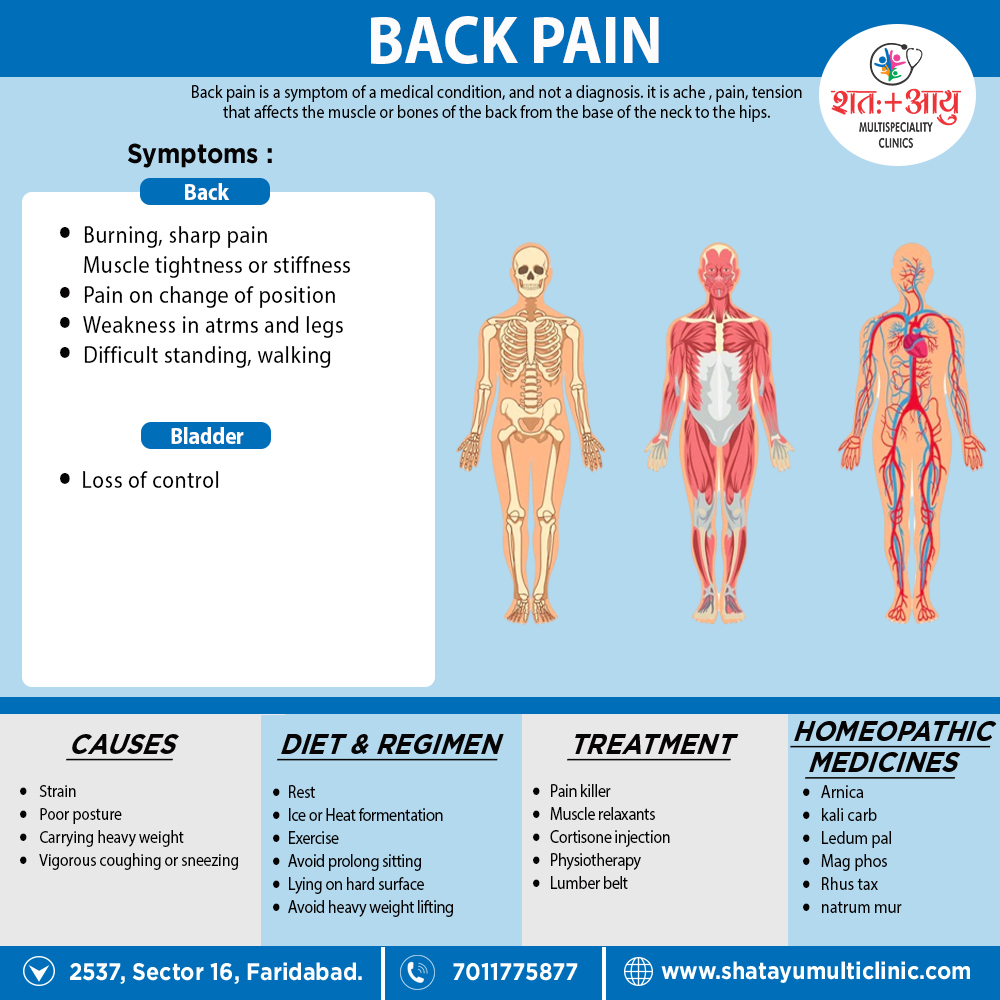BACKACHE
Low Backache (also called as ‘Lumbago‘) ranks at top for being the most common reason of backache. It is a leading contributor to missed work. Backache is because the lower part of the back bears the weight of your upper body and the weight you are carrying. It also twists and bends more than the upper back.
Sciatica is a common type of pain affecting the nerve, usually affects only one side of the lower body. In detail, Sciatic nerve is a large nerve extending from the lower back down the back of each leg and its affection is quite a common cause for backache.
If you are an adult aged between 35 and 55 years, you are more prone to suffer from backache due to the aging process.
Today’s modern lifestyles with either too little or too much exercise, sedentary work life are dominant contributors for backache.
Most of the time the cause of backache is physical, but you should be aware that emotional stress can affect the severity of the pain. Stress causes the back muscles to become tense and painful.
Acute or short-term backache
usually lasts from a few days to a few weeks. Most acute backache is mechanical in nature, the result of either trauma to the lower back or arthritis.
Chronic backache
means frequent or daily pain which can interfere with your life. Additionally, It can limit your activities and ability to work. It is often progressive and usually the cause is difficult to determine.
Pregnant females
Also suffer from low backache since the ligaments in the body naturally become softer and stretch to prepare for labour. This can put a strain on the joints of lower back and pelvis.
Children and teenagers
Also suffer from low backache these days due to the number of hours per week they spend in front of the TV or doing computer work, sitting posture, slouching or low levels of physical activity results in decreased muscle endurance.

